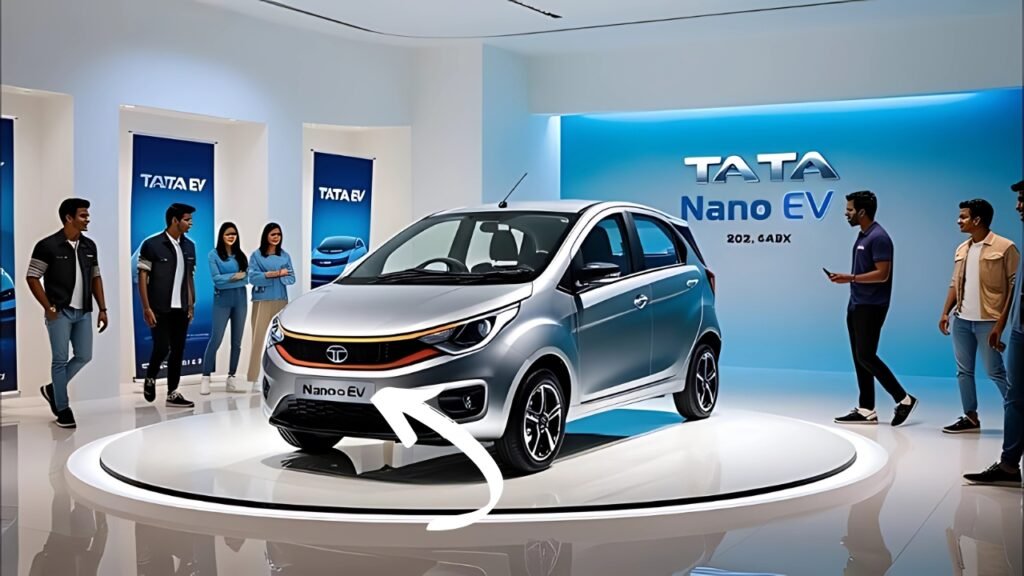The Tata Nano, once celebrated as the world’s cheapest car, has undergone a remarkable transformation as it steps into the electric vehicle (EV) segment.
With the growing emphasis on sustainable transportation and the need for affordable mobility solutions, the Tata Nano EV aims to redefine urban commuting in India.
This article delves into the features, design, performance, and overall impact of the Tata Nano EV, exploring why it is poised to become a game-changer in the Indian automotive landscape.
Launched in 2008, the Tata Nano was designed to provide an affordable alternative to two-wheelers, making car ownership accessible to millions of Indian families.
The vision behind the Nano was to create a safe, reliable, and economical vehicle that could cater to the needs of the masses.
Despite its innovative design and low price point, the Nano faced several challenges, including safety concerns, marketing missteps, and changing consumer preferences.
As the automotive landscape evolved, Tata Motors recognized the need to adapt to the growing demand for electric vehicles.
The transition from the traditional Nano to the Tata Nano EV represents a strategic shift towards sustainable mobility while retaining the core values of affordability and accessibility.
The Tata Nano EV retains the compact and distinctive design of its predecessor while incorporating modern elements that reflect its electric nature.
The exterior features a contemporary look, with sleek lines and an aerodynamic profile that enhances efficiency.
-
Modern Front Fascia: The front of the Nano EV showcases a redesigned grille and LED headlights, giving it a more aggressive and modern appearance.
-
Aerodynamic Body: The compact dimensions and aerodynamic shape contribute to improved energy efficiency, making it ideal for city driving.
-
Bold Color Options: The Nano EV is available in a range of vibrant colors, appealing to environmentally conscious consumers who seek style in their electric vehicles.
Inside, the Tata Nano EV offers a spacious and comfortable cabin designed for urban commuting.
The interior layout prioritizes functionality and convenience, making it suitable for both daily use and longer journeys.
-
Flexible Seating: The rear seats can be folded down to create a larger cargo space, making it easy to transport larger items or luggage.
-
User-Friendly Dashboard: The dashboard features a modern design with easy-to-read instrumentation and controls, enhancing the overall driving experience.
-
Spacious Boot: The Nano EV offers a practical boot space, making it suitable for carrying groceries, luggage, or other essentials.
The Tata Nano EV is powered by an electric motor designed to deliver a balance of performance and efficiency.
With a focus on urban mobility, the Nano EV aims to provide a smooth and responsive driving experience.
-
Power Output: The electric motor is expected to produce around 40 bhp, providing sufficient power for city driving and short commutes.
-
Torque: The motor generates instant torque, ensuring quick acceleration and responsiveness in urban traffic.
-
Battery Capacity: The Nano EV is equipped with a lithium-ion battery pack, offering a range of approximately 150-200 kilometers on a single charge, making it suitable for daily commuting.
The Tata Nano EV supports multiple charging options, including:
-
Home Charging: Owners can charge the vehicle using a standard household outlet, making it convenient for daily use.
-
Fast Charging: The Nano EV is compatible with fast charging stations, allowing for quicker charging times and increased convenience for longer journeys.
Safety is a top priority for Tata Motors, and the Nano EV is equipped with several features designed to protect occupants and enhance driving confidence.
Key Safety Features
-
Multiple Airbags: The Nano EV comes with multiple airbags, including front, side, and curtain airbags, providing comprehensive protection in the event of a collision.
-
ABS with EBD: The anti-lock braking system (ABS) with electronic brake-force distribution (EBD) enhances braking performance, preventing wheel lockup during sudden stops.
-
Stability Control: The vehicle’s stability control system helps maintain traction and control during challenging driving conditions, ensuring a safer driving experience.
While the new Nano EV is expected to remain true to its simple, no-frills ethos, Tata Motors is likely to incorporate subtle technological enhancements to meet the expectations of modern riders.
A USB charging port, for instance, is almost certain to be included, allowing riders to keep their devices charged on the go.
The Tata Nano EV has the potential to make a significant impact on the Indian automotive market and the economy as a whole.
Its affordability and practicality make it an attractive option for first-time car buyers and urban commuters seeking sustainable transportation solutions.
-
Job Creation: The production and sale of the Nano EV are expected to create jobs in manufacturing, sales, and service sectors, contributing to the overall economy.
-
Rural Connectivity: The Nano EV has the potential to improve connectivity in rural areas, enabling families to access education, healthcare, and employment opportunities.
-
Last-Mile Delivery: The compact size and electric efficiency of the Nano EV make it a popular choice for small businesses and delivery services, further boosting economic activity.
As the Tata Nano EV prepares to enter the market, there is a palpable sense of excitement among consumers and automotive experts alike.
The prospect of an affordable electric vehicle that retains the essence of the original Nano is generating buzz.
Anticipated Consumer Feedback
-
Value for Money: Many potential buyers appreciate the Nano EV’s affordability, both in terms of purchase price and ongoing maintenance costs.
-
Eco-Friendly Choice: The shift to electric mobility aligns with the growing demand for environmentally friendly transportation options, appealing to eco-conscious consumers.
-
Compact Design: The compact dimensions of the Nano EV make it ideal for navigating congested urban environments, a significant advantage for city dwellers.
Despite its potential, the Tata Nano EV faces challenges in a rapidly evolving automotive landscape.
The rise of electric vehicles and increasing competition from other manufacturers pose potential threats to its market share.
Competitors
The Nano EV will compete with several models in the electric vehicle segment, including:
-
Mahindra eVerito: Known for its spacious interior and practicality, the eVerito is a strong contender in the electric sedan market.
-
Tata Nexon EV: The Nexon EV offers a more powerful electric motor and a range of features, appealing to consumers seeking a compact SUV.
-
Ather 450X: The Ather 450X is known for its advanced technology and performance, making it a popular choice among urban riders.
As the automotive industry continues to evolve, the Tata Nano EV is expected to adapt to changing consumer preferences and market trends.
While the focus on affordability and practicality will remain, there may be opportunities to incorporate more advanced technology and features in future iterations.
Potential Developments
-
Enhanced Range: Future models of the Nano EV may feature improved battery technology, offering a longer range and faster charging times.
-
Additional Variants: Tata Motors may consider introducing additional variants of the Nano EV, catering to different consumer needs and preferences.
Tata Nano EV : A New Chapter in Affordable Electric Mobility
The Tata Nano EV represents a significant step forward in the pursuit of affordable electric mobility in India.
By combining the legacy of the original Nano with modern electric technology, Tata Motors aims to provide a sustainable and practical solution for urban commuting.
As the demand for electric vehicles continues to grow, the Tata Nano EV has the potential to make a lasting impact on the Indian automotive market.
With its affordability, compact design, and eco-friendly features, the Nano EV is poised to become a trusted companion for families and individuals seeking a reliable and sustainable mode of transportation.
In a world where environmental consciousness is paramount, the Tata Nano EV stands as a testament to the power of innovation and the commitment to creating a greener future.
As it hits the roads, the Nano EV is not just a car; it is a symbol of hope for a sustainable and accessible transportation solution for all.
New Toyota Innova come with Dhansu look, price is 23 lakh
Source link



